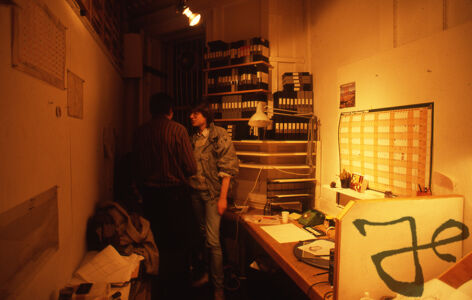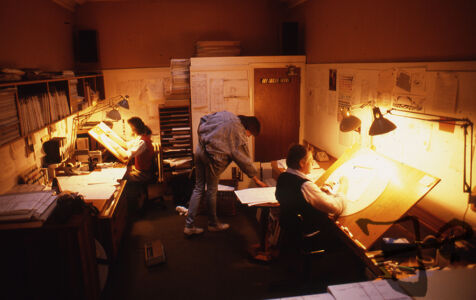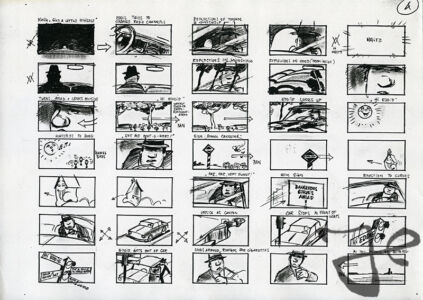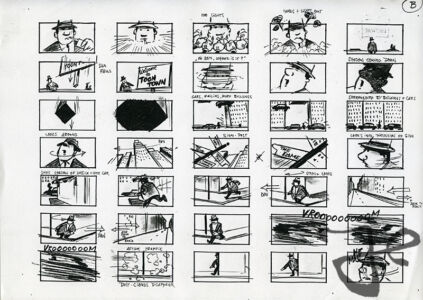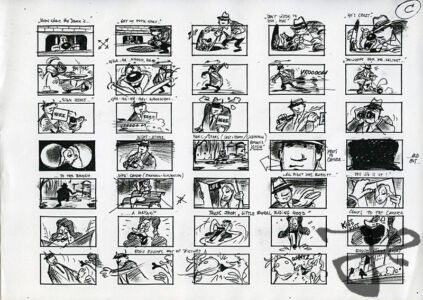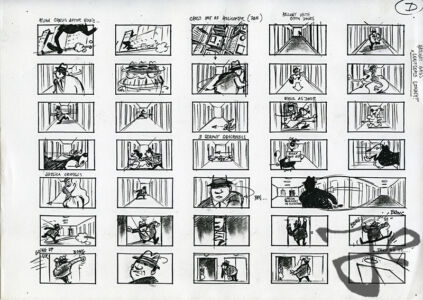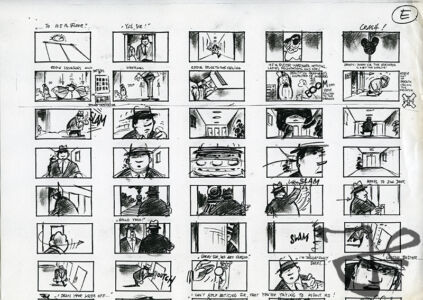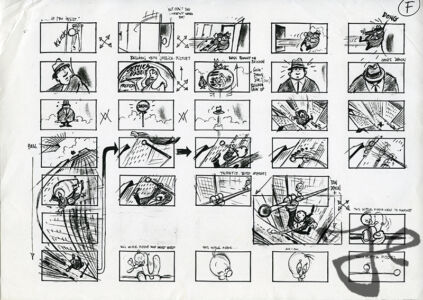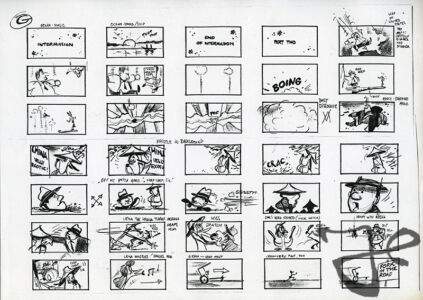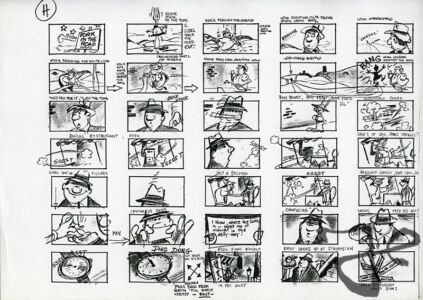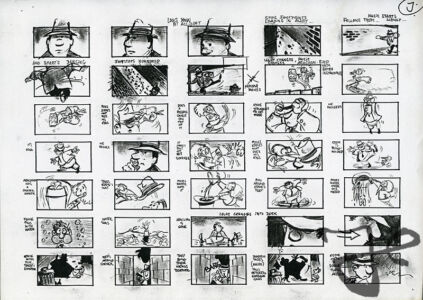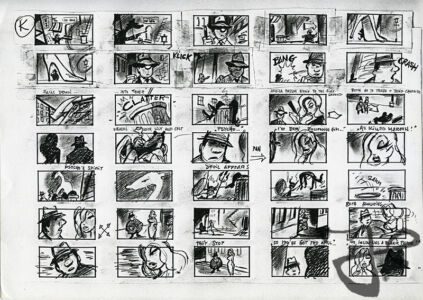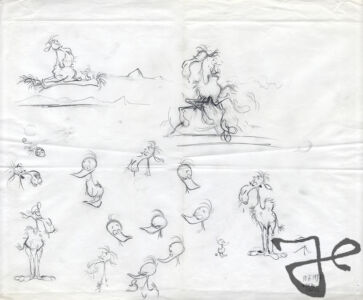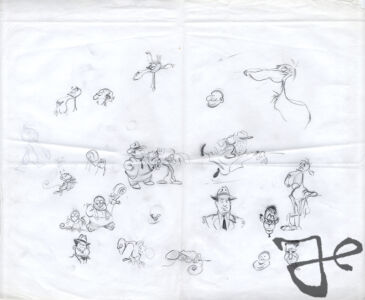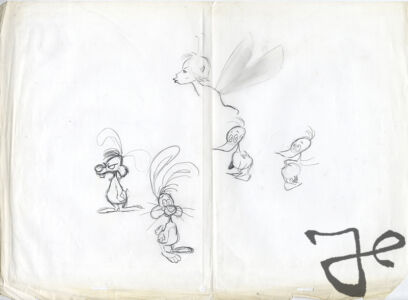This post is in memory of the animation legend Richard Williams who passed away on August 16, 2019.

In 1985, Harald Siepermann, Hans Bacher, Uli Meyer and Jens Wiemer started an advertisement company, called Mad T Party. For this company the artists created all kinds of artwork, such as advertisement illustrations, poster designs, comic books, but also storyboards and character designs for television commercials. Some of these commercials were animated at Richard Williams animation studio in London. “Through this work, we had met Richard Williams who was often animating the commercials, that any of us would had been working on before,” remembered Harald Siepermann. “Through our common interest in animation and the love for the work of Milt Kahl, a friendship developed.”
The artists – and especially Hans Bacher – maintained good contact with Richard Williams, who frequently came to their studio in Dusseldorf to make Xerox copies of Hans Bacher’s impressive collection of Disney artwork. Harald Siepermann and Hans Bacher would also visit Richard Williams in his animation studio in 13 Soho Square, in London.
The connection with Richard Williams led to a remarkable opportunity for Harald Siepermann and Hans Bacher. Richard Williams was assigned as Animation Director on the Steven Spielberg / Walt Disney production Who Framed Roger Rabbit. “When Hans and I were visiting him one day in London,” continued Siepermann, “he had been talking to Spielberg and Zemeckis and was looking for artists to increase the manpower of his lil’ studio in Soho Square, to manage the amount of work that would be necessary to handle Roger Rabbit.” Siepermann and Bacher were hired on the spot, and Williams asked them to help with character designs for the weasels and storyboards for the ‘Escape from Toontown’-sequence.
Since the 1960’s, Richard Williams’ studio was located at Soho Square in London. But because of the production Who Framed Roger Rabbit, the studio moved to a new building, a former department store, called the Forum in Camden Town, where the Walt Disney studio was located. Because of the movement, Richard Williams had to cleanup his former studio, and throw away a lot of his animation cells from the television commercials, that were produced at his studio.
“Hans and I got quite a few cells from Dick’s commercials as presents when we asked for them,” commented Harald Siepermann. “‘Go ahead, take them.’ Dick himself didn’t think of them very highly… The Pink Panther cell I found one night when I was walking home after a stroll along Oxford Street, after ‘a hard day’s work’ and saw two big containers in front of Dick’s old studio, filled to the max with stuff that apparently Dick hadn’t found worthy enough to take along with him to the new location. The cell, incl. the effects sheet, cut together from scotch tape, was the first thing I pulled from the container.” Harald Siepermann had the cells framed, and hung above his desk.

Harald and Hans worked a few days at the studio in Soho Square in late February, before moving to the new building. Below are some pictures in that old studio.

For the 25 year old Harald Siepermann it was a great experience to work on Who Framed Roger Rabbit. A few years earlier he was still a student Graphic Design, and now he was involved in the biggest Hollywood production at that time. This opportunity opened many doors in his career, what was made possible by Hans Bacher and the late great Richard Williams.




